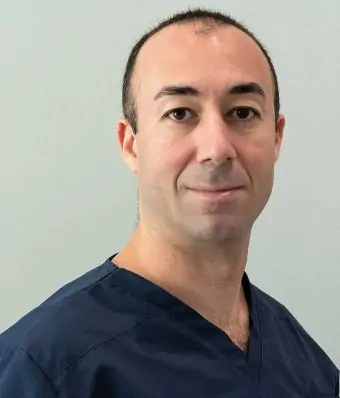3D-Guided Implant Surgery in Dubai
Experience a Safer Procedure and Better Healing Time With SDC’s 3D-Guided Implant Surgery.
Book An Appointment
You can use the form below and we will get back to you as soon as possible.
Dental Implants Are Now Easier With 3D-Guided Surgery
Dental implants may be a worrisome procedure for some, but when done at the hands of experts, there’s no need to worry. What’s even better is that with today’s technological advancements, dental implants have become much more accurate with 3D-guided implant surgery.
3D-guided implant surgery is a more accurate and safer tooth replacement procedure than traditional dental implants. It deploys 3D imaging techniques and advanced 3D printing technology to create a detailed guide for the operation.
The procedure minimizes the margin of error and ensures accurate placement while reducing surgery time and recovery period, resulting in adequate and predictable long-term outcomes.

What Is 3D-Guided Implant Surgery?
3D-guided dental implant surgery is essentially a collaboration between dentistry and the latest technological advancements in 3D printing and imaging. It involves performing a 3D cone-beam computed tomography (CBCT) scan of the patient’s jaw to create a detailed, custom-made surgical guide specifically to the patient’s case.
The 3D surgical guide facilitates the tooth replacement process for dentists, making the procedure much more accurate and safe, leading to better results and faster healing time.
3D-Guided Surgery vs. Traditional Implant Surgery
- Traditional implant surgery involves the placement of dental implants into the jawbone using a manual drill and X-ray imaging. Although this procedure has been present for many years and is reliable with the right dentist, it still has drawbacks, as the X-rays don’t provide an accurate enough view of the bone.
- When placing dental implants, dentists must have excellent precision because if the implant doesn’t sit in the correct apex position, there’s a chance it doesn’t fuse with the bone and may need to be removed.
- In recent years, 3D-guided implant surgery has become a popular implant treatment choice compared to traditional implant surgery as it utilizes advanced 3D imaging techniques to create a detailed 3D map of the patient’s jawbone.
- The model created from the 3D cone-beam computed tomography (CBCT) scan allows the surgeon to plan the ideal position of the implant with better precision and accuracy.
- However, the main reason why guided implants are such a revolutionary dentistry practice is because they minimize the possibility of something going wrong during the procedure.
- 3D-guided dental implant surgeries require smaller incisions than regular dental implants because the tooth’s exact location is determined easily, thanks to the custom-made mold. This makes the surgery less invasive and reduces the chances of implant failure and other biomechanical complications.
Stages of 3D Guided Implant Surgery
3D-guided implant surgery is an intricate and detailed two-stage approach to performing the implant procedure. It’s an evolution from regular dental implants that results in more predictable outcomes. The process typically happens in a specific order. Here’s how it goes.
Pre-operation
Before the operation date is set, a 3D imaging scan of the patient’s jaw is required to assess the condition thoroughly. This can be done by taking a 3D CT scan or a CBCT scan, which visualizes the entire skull of the patient.
Based on this virtual model, dental technicians create a template for the specific jaw shape of the patient, using computer software to overlay the final product until it perfectly fits the patient’s mouth scan.
The three-dimensional visualization of the skull and jawbone of the patient is then used to create a custom-made, detailed 3D copy of the jaw called a surgical guide, which will significantly facilitate the implant surgery.
The 3D-printed template is made with the exact measurements of the patient’s jaw using non-toxic materials to ensure the patient’s safety.
This surgical guide will later be used during the operation to help dentists locate the implant’s optimal position effortlessly, making for higher success rates.
During the Guided Implant Surgery
The medical care providers prepare the patient for the surgery, and anesthesia is administered to eliminate any pain or discomfort. The dental guide is then fitted in the patient’s mouth, using the adjacent teeth to stabilize it and ensure it stays in place for enhanced precision.
The dentist will then make a small incision in the exact location of the designated implant, reducing the risk of error possible during a free-hand implant procedure.
The drilling process begins following the surgical guidance obtained from the 3D model; this procedure is done with utmost accuracy due to the computed calculations.
Following the drilling, the dentist will place the metal biocompatible titanium tooth root inside the opening in the jawbone. The dentist will then remove the surgical guide, and the soft tissue incision will be closed.
This small incision will require minimal stitching, leading to improved healing rates and fewer side effects than the traditional manual dental implant treatments.
Post-Operation
In any dental implant surgery, guided or manual, the implant must fuse with the bone, a process called osseointegration that usually takes several months.
During this period, the patient must follow the surgeon’s instructions word by word to fully recover and lower the risk of complications.
Once the implant has osseointegrated, it will become one with the jawbone structure, and the jaw tissue will grow around it, increasing its strength and stability. After osseointegration, the surgeon will place a crown on the implant.
Although free-hand dental implants are very popular, they still pose a risk of injury to areas near the tooth. In contrast, guided implants use 3D dental technology to reduce the risk of collateral damage. That’s what makes guided implant surgery have notably faster recovery than free-hand implants.
Our Swedish & German Dentists in Dubai
We are committed to enhance your experience

Dr. Ines Mockbil
General Dentist, Cosmetic Dentist Specialist
Dr. Ines offers state of the art minimally invasive dentistry techniques in all her treatments.

Dr. Nabil Mockbil
Orthodontist Specialist, General Dentist
Dr. Nabil utilizes all modern techniques to give his patients the bespoke treatments they desire

Dr. Torsten Fanselow
Specialist Implantologist, General Dentist
Dr. Torsten is an experienced dentist with a focus on implantology and prosthodontics.
Why Choose 3D-Guided Implant Surgery
Free-hand dental implant placements are great, but while operating in such a small area, there’s certainly plenty of room for error.
That’s where 3D-printed surgical guides come into the picture, paving the way for a seamless operation with an improved rate of accuracy.
The 3D-guided implant surgery has a thorough and intricate treatment planning, whereas the hand-free procedure is a manual process that relies heavily on the dentist’s skill alone.
Although a dentist’s expertise is a crucial factor in any dental procedure, minimizing the chance of human error is always ideal, and that is precisely what 3D-guided implant surgery is all about.
The guided surgery aims to eliminate operational issues to shorten the recovery period and improve overall results.
Patients can expect a quick and fast recovery if they follow their doctor’s orders and take their prescribed medications. But in any case, it is advised to avoid strenuous physical activities and get as much rest as possible after any surgical dental treatment.
The dental center you can trust
Dubai Marina, Seba Street
Call us today
Saturday Closed
An Appointment
FAQs about 3D-Guided Implant Surgery
The benefits of 3D-guided implant surgery include:
- Increased accuracy: 3D-guided implant surgery can help to improve the accuracy of implant placement by providing the surgeon with a real-time view of the patient’s anatomy.
- Reduced risk of complications: Thanks to the detailed and accurate view of the patient’s bone structure, the surgeon can avoid damaging surrounding tissues.
- Shorter operating time: the 3D model of the patient’s jaw helps shorten the operating time by allowing the surgeon to operate more efficiently without having to locate the implant’s position.
3D-guided implant surgery is a good option for most people who are considering dental implant surgery. However, it is especially beneficial for people who have:
- Complex dental anatomy
- Limited bone available for implant placement
- A history of complications with previous dental implant surgery
- A high risk of complications


